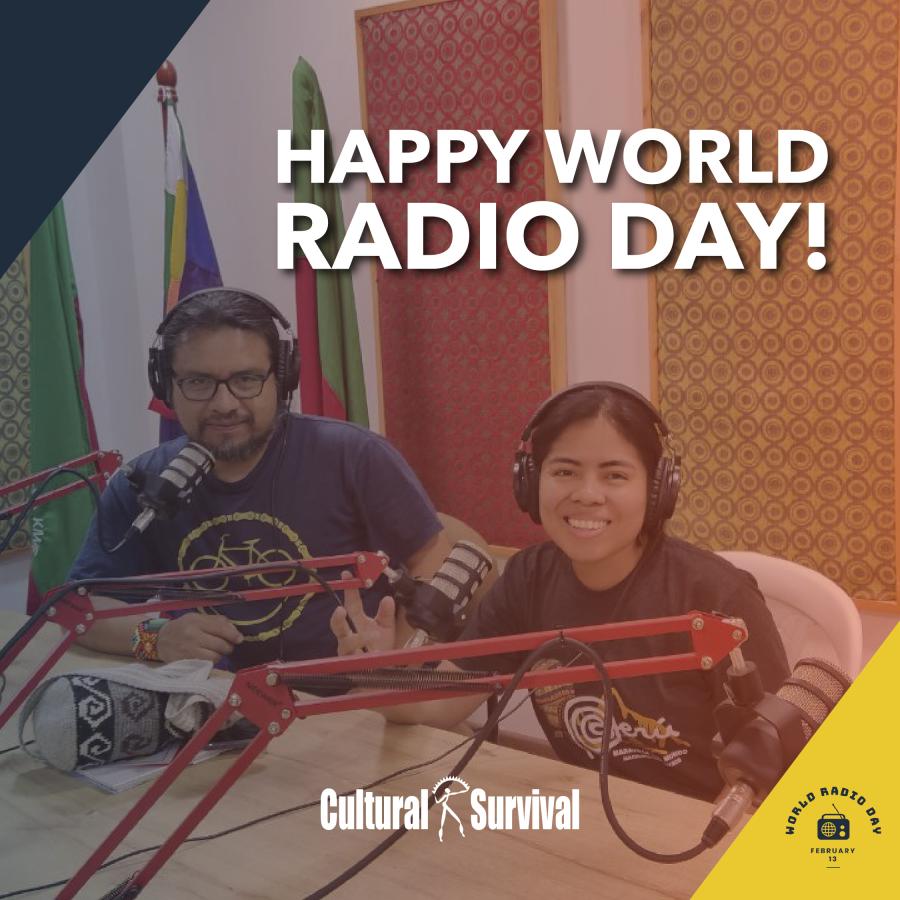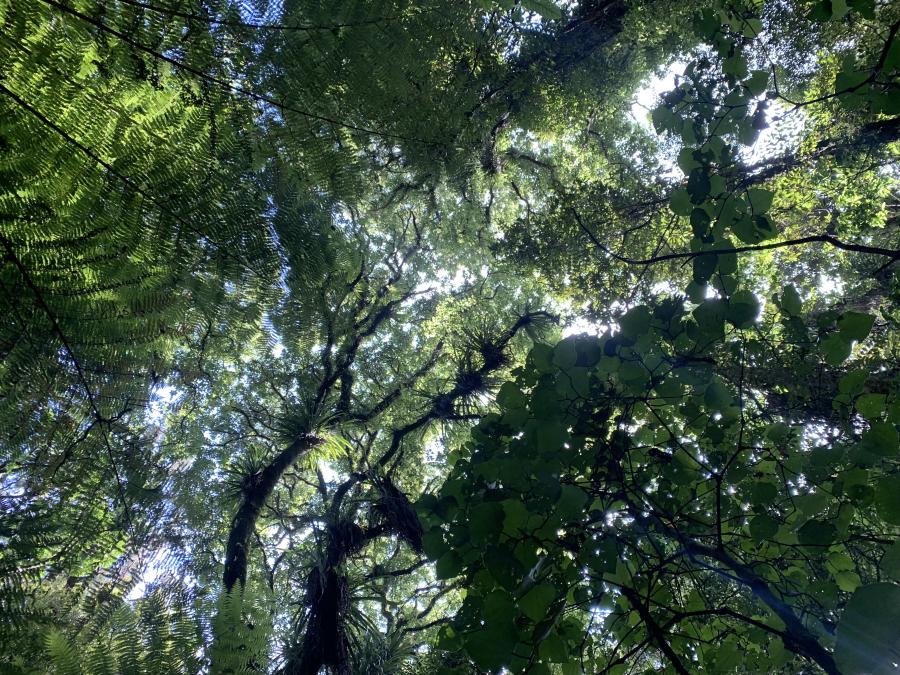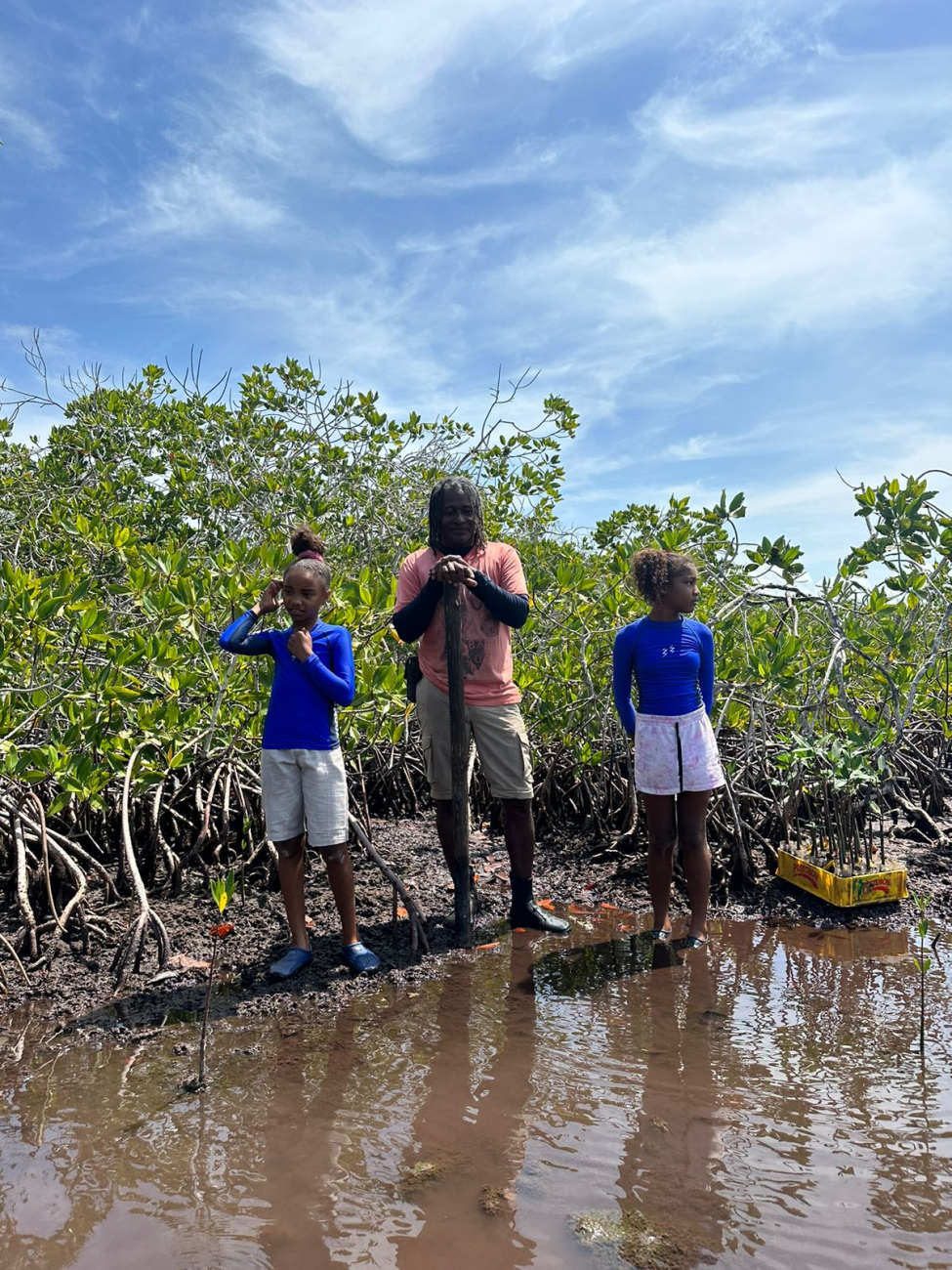
As the world celebrates World Oceans Day, we turn our attention to Barú Island, a hidden gem nestled off the coast of Cartagena, Colombia. On this vibrant island, the Afro-descendant community serves as the stewards of rich mangrove ecosystems that line their coastal shores. On a recent visit to Barú, Cultural Survival’s team learned about the remarkable work being done by EcoBioVi, a youth-led, a 2021 Keepers of the Earth Fund grant partner whose story is one of resilience, cultural strengthening, and shared commitment to safeguarding the region's precious ecosystems.
Mangroves, with their intricate network of roots, stand as nature's frontline defense against coastal erosion and extreme weather events. Along the Barú coastline, these exceptional trees create a living shield, shielding the island's residents and their homes from the ravages of storms and rising sea levels. Mangroves are also vital for the survival of marine life. The intricate root systems of these remarkable trees provide a haven for a plethora of species, including fish, crustaceans, and migratory birds. Their dense canopies offer protection, nesting sites, and abundant food sources, fostering biodiversity and sustaining the delicate balance of the marine ecosystem.
The Barú community has a unique history shaped by their close relationship with the marine and coastal ecosystems in the area, which have ensured their well being for centuries. For example, the mangrove is essential for the resident's food sovereignty. It has also proved to be a versatile natural resource for building boats, houses, and crafts, as well as firewood for cooking and serving a number of other important functions. In the last several years, however, the deep connection that community members have held with the mangrove forests has been affected due to acculturation, population growth, and the increase of irresponsible and consumer-driven tourism. These factors have led to a growing deterioration of marine ecosystems and natural resources vital to the town's population.
The Culture and Environment Community Council of Barú has intervened with a timely sustainable approach to community development to combat these alarming issues. In our discussions with Wilmer Gómez, the project organizer behind EcoBioVi's Learning Without Reading with Open Eyes Project, we witnessed the transformative power of education rooted in community and tradition. This innovative learning strategy engages the younger generation, bridging the gap between past and future. By fostering an ongoing dialogue between elder members of the Barú community, who hold valuable local knowledge, and the children, the project aims to nurture cultural identity, promote conservation, and emphasize the significance of these ecosystems for community life.
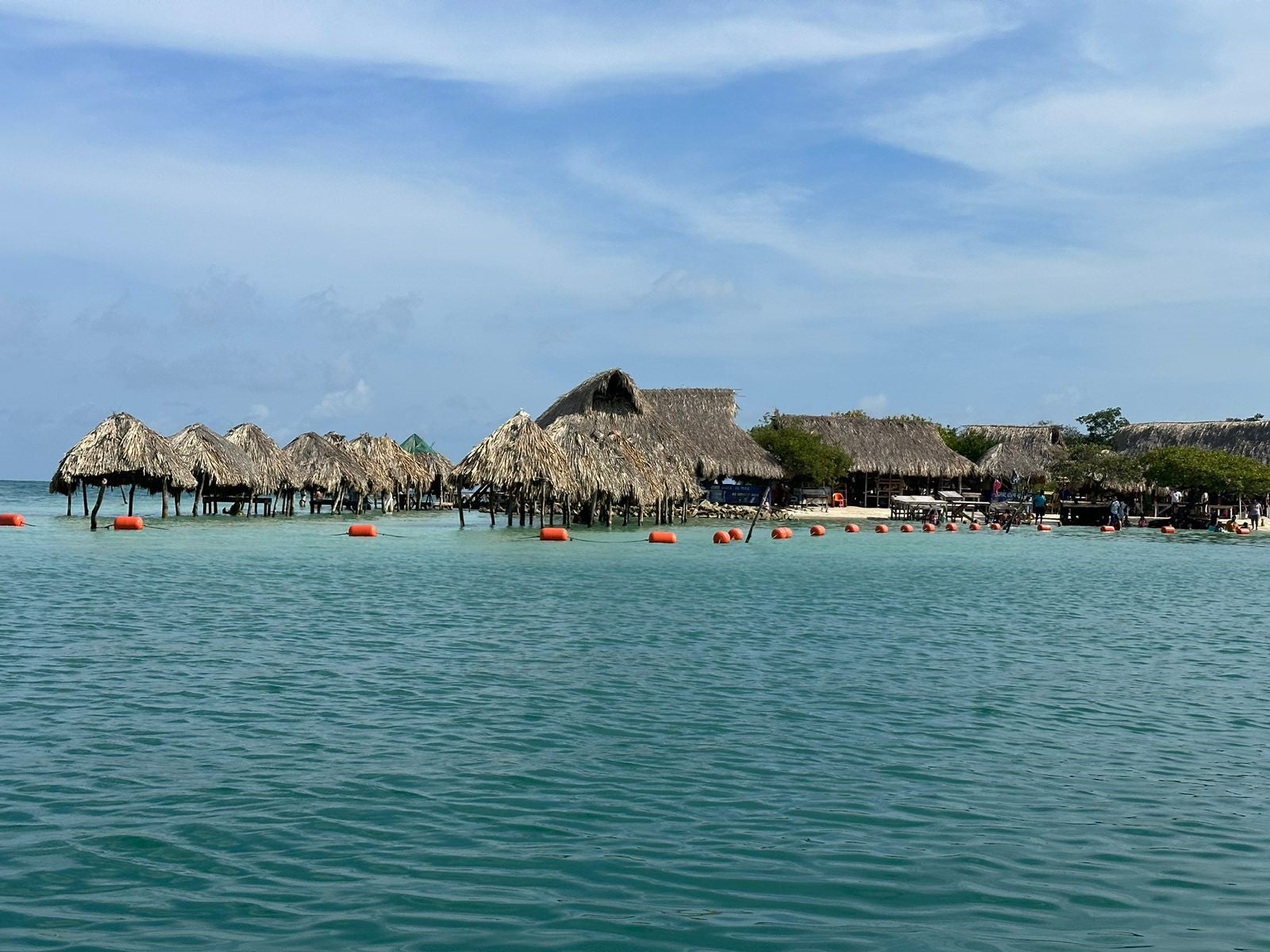
The Learning Without Reading with Open Eyes Project recognizes that young people will be the torchbearers of the community's future and therefore, the project seeks to empower them by instilling a deep appreciation for their environment and heritage. During Cultural Survival's visit, the enthusiasm and excitement radiating from the children as they shared their experiences with us spoke volumes about the project's success and potential for positive social transformation. With the youngest project participant aged just eight years old, it was clear from the outset that the children were at the very heart of not only the organization but also the community. The volunteer program with EcoBioVi has enabled young people to learn important biotic and cultural knowledge while having fun; as one volunteer said, “I love the mangroves because I go there every day to swim and play with my friends. They protect us from storms and are important to our environment."
Cultural Survival had the opportunity to join EcoBioVi on a series of tours to explore the various islands surrounding the area and gain a deeper understanding of the diverse marine ecosystems within the territory. This was an immersive experience into the every day life of the community, as we navigated through internal lagoons and corridors, showcasing complex mangrove forests and revealing the presence of other ecosystems, like the tropical dry forests, seamlessly connected by trails and sandy areas. The narrow passages of intertwining mangrove roots formed a living tapestry that symbolizes the community's unity and resilience. As our boat glided through the water, a small group of children volunteering with EcoBioV pointed out and described the intricate web of life that enveloped us. The volunteers highlighted each mangrove species' differences, similarities, and other characteristics in the local ecosystem. They guided us to a specific area where five mangrove species converge, showcasing the richness and biodiversity of the territory.
During the tour, Wilmer Gomez recalled an anecdote from when a previous project participant asked, "What could be the similarity between a mangrove and a human being?" He said that they had to search for answers together, from which the following responses emerged, "resistance, the capacity to endure and resist adversity or complex situations." Another response was: "Resilience, both the mangrove and us not only resist, but we also overcome adversity."
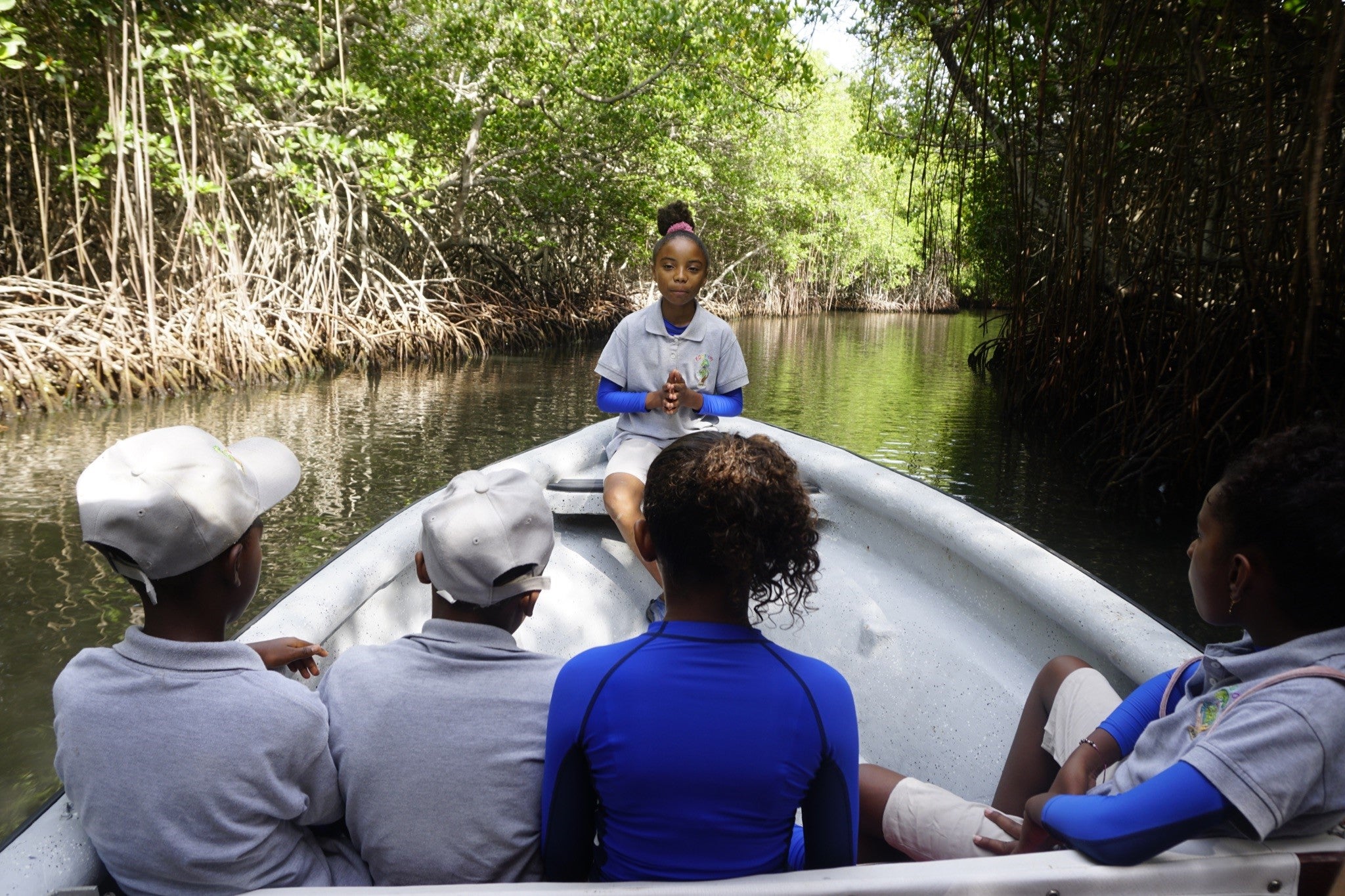
Another significant aspect of the tour was our participation in a mangrove reforestation program organized by EcoBioVi, where we had the opportunity to plant mangrove seedlings in vulnerable areas of the mangrove forests. This activity was particularly captivating because the participants showcased the progress of the seedlings they had planted. They described the timeline for the emergence of the first leaves, the color changes in the propagules before and after leaf sprouting, and the essential measures to ensure the sustainability of the newly planted mangrove trees in the area. We learned that planting the seedlings in an alternating pattern with approximately one-meter spacing between each tree would ensure optimal coverage density within the shortest possible time. This density was crucial to withstand the waves generated by the continuous passage of boats, safeguarding both the mature mangroves that acted as protective barriers along the coastline and the newly planted young mangroves.
While exploring a specific stretch of coastline, Wilmer Gómez educated us about climate change's adverse effects on the Barú community. The impact of climate change on native forests, the escalating scarcity of rainfall, and the deterioration of coastal marine ecosystems, including mangroves, have been distressingly apparent. Recognizing this, EcoBioVi initiated the reforestation of the mangrove regions most affected by climate change and human alterations. This endeavor serves as a mitigation process, aiming to alleviate the impacts caused by climate change while enhancing the community's capacity to adapt. Through this project, the community is revitalizing and rebuilding its sustainable relationship with the marine ecosystems that are integral to their well being.
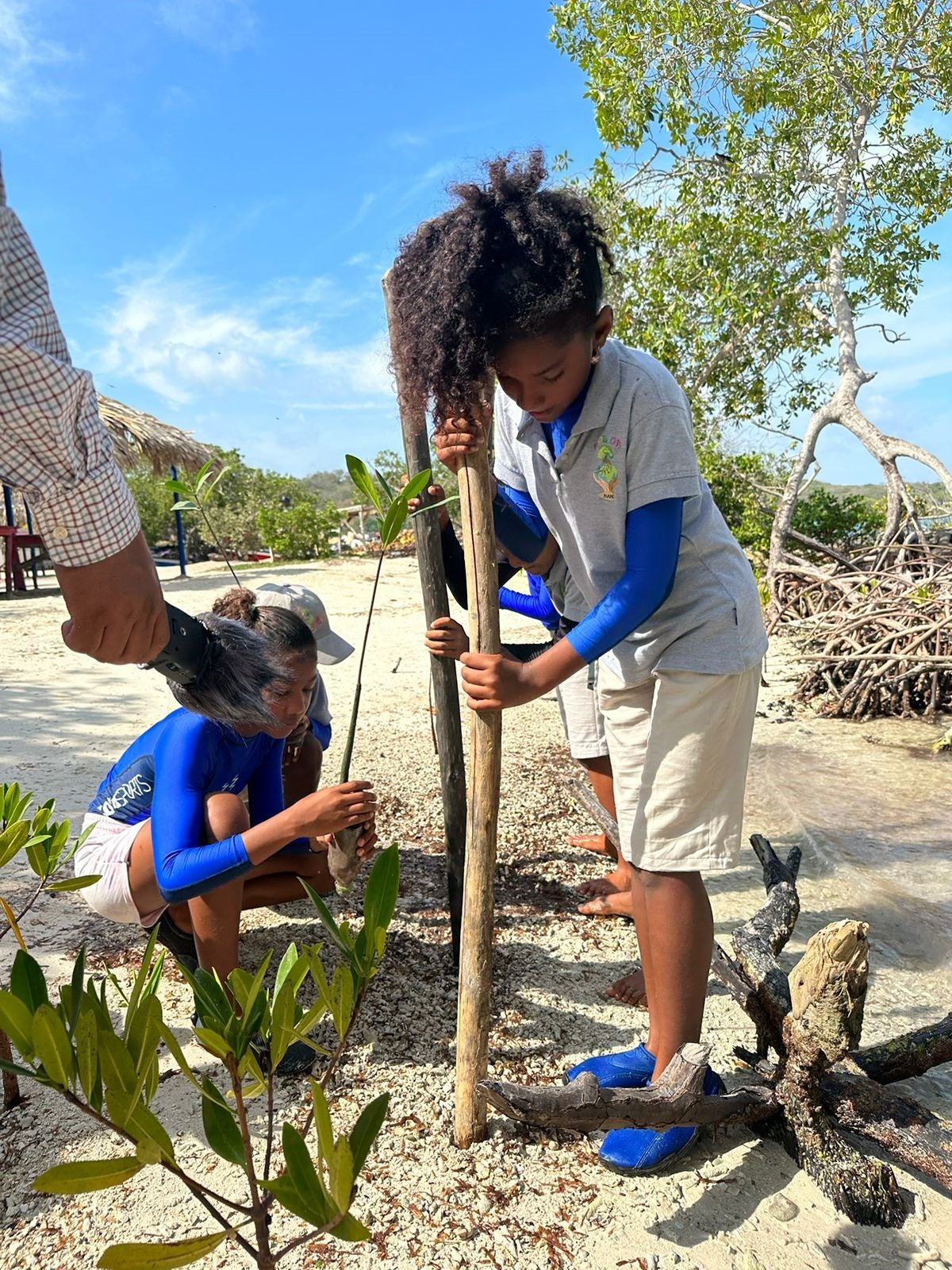
On this World Oceans Day, it is essential to acknowledge and celebrate community projects like the one we witnessed in Barú. Local residents possess invaluable knowledge systems that are deeply rooted in their territories. Their understanding of the land, the sea, and the interconnectedness of their environment allows them to protect and preserve their ecosystems in the most effective and sustainable ways. By supporting and recognizing these community-led initiatives, we can truly make a difference in safeguarding our precious marine environments for future generations.
The Keepers of the Earth Fund (KOEF) is an Indigenous-led fund within Cultural Survival, designed to support the advocacy and community development projects of Indigenous Peoples. Since 2017, through small grants and technical assistance, KOEF has supported 238 projects in 38 countries for a total of $1,059,702. KOEF provides grassroots Indigenous-led communities, organizations, and traditional governments to support their self-determined development projects based on their Indigenous values. Predicated on the United Nations Declaration on the Rights of Indigenous Peoples, Cultural Survival uses a rights-based approach in our grantmaking strategies to support Indigenous grassroots solutions through the equitable distribution of resources to Indigenous communities.

